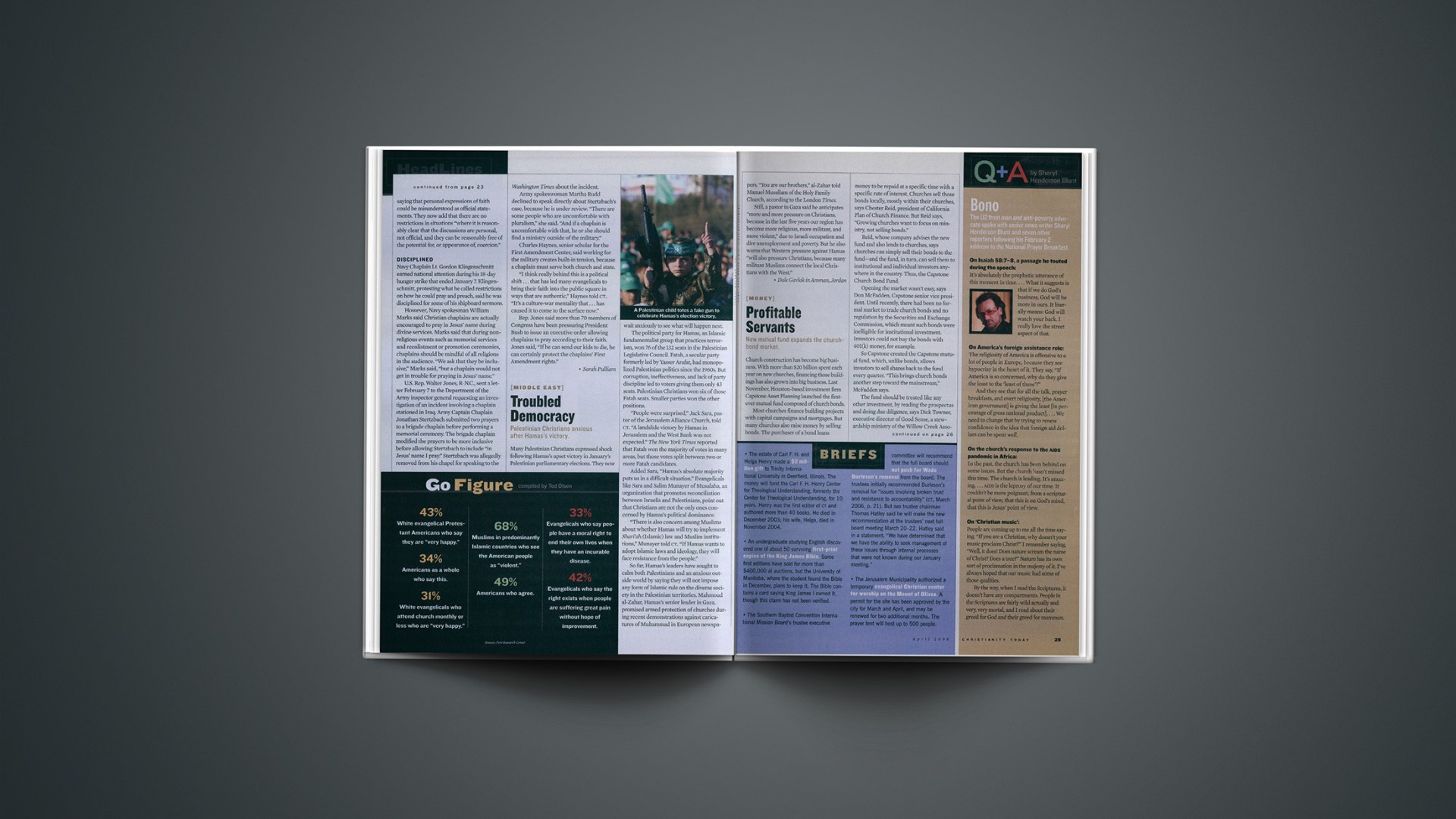Church construction has become big business. With more than $20 billion spent each year on new churches, financing those buildings has also grown into big business. Last November, Houston-based investment firm Capstone Asset Planning launched the first-ever mutual fund composed of church bonds.
Most churches finance building projects with capital campaigns and mortgages. But many churches also raise money by selling bonds. The purchaser of a bond loans money to be repaid at a specific time with a specific rate of interest. Churches sell those bonds locally, mostly within their churches, says Chester Reid, president of California Plan of Church Finance. But Reid says, “Growing churches want to focus on ministry, not selling bonds.”
Reid, whose company advises the new fund and also lends to churches, says churches can simply sell their bonds to the fund—and the fund, in turn, can sell them to institutional and individual investors anywhere in the country. Thus, the Capstone Church Bond Fund.
Opening the market wasn’t easy, says Don McFadden, Capstone senior vice president. Until recently, there had been no formal market to trade church bonds and no regulation by the Securities and Exchange Commission, which meant such bonds were inelligible for institutional investment. Investors could not buy the bonds with 401(k) money, for example.
So Capstone created the Capstone mutual fund, which, unlike bonds, allows investors to sell shares back to the fund every quarter. “This brings church bonds another step toward the mainstream,” McFadden says.
The fund should be treated like any other investment, by reading the prospectus and doing due diligence, says Dick Towner, executive director of Good Sense, a stewardship ministry of the Willow Creek Association. “There are a number of special risks that pertain to this kind of investment, not the least of which is its illiquidity. Some caution would need to be taken, but it could be supportive of a good cause.”
The fund brings a level of security for investors in traditional church bonds. A church may endure a leadership crisis, making it unable to pay off bonds it previously sold.
But the fund includes a broad range of churches, seminaries, and ministries. “This gives you diversification and scrutiny,” McFadden says. “It qualifies for 401(k) plans and trades like any mutual fund,” except shares can only be sold back quarterly. McFadden expects returns between 7 and 8 percent.
Reid believes the market will grow beyond its current value of less than $1 billion. “There is a new megachurch [a church with 2,000 or more members] every three days,” Reid says. “Most are less than 10 years old.” There are 450,000 evangelical churches, Reid says, 68 percent of which carry debt.
“Bonds make sense,” he says.
Copyright © 2006 Christianity Today. Click for reprint information.
Related Elsewhere:
A press release is available at Forbes website.
You can follow the fund at Yahoo finance.
More information is available from California Plan of Church Finance and Capstone Asset Management.










